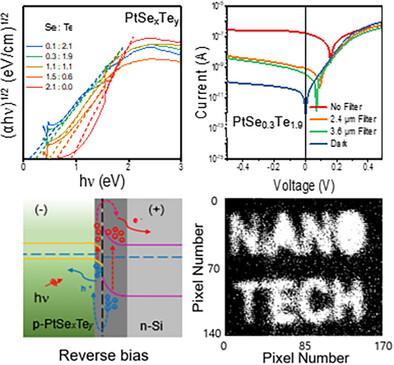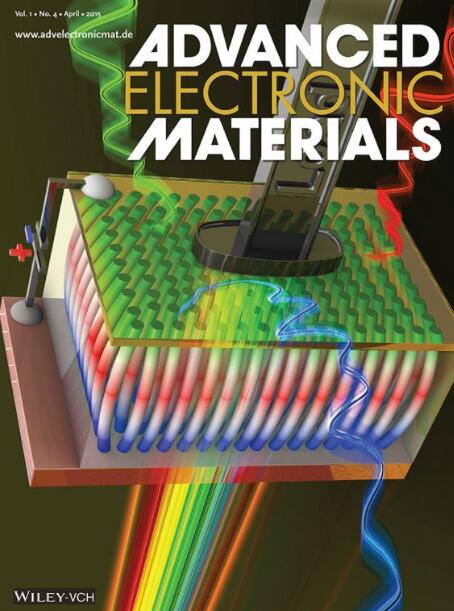Compositionally Tunable 2D PtSexTey Alloys Synthesized via Thermally Assisted Conversion for Mid-Wave Infrared Photodetection
IF 5.3
2区 材料科学
Q2 MATERIALS SCIENCE, MULTIDISCIPLINARY
引用次数: 0
Abstract
Mid-wave infrared (MWIR) photodetectors play a crucial role in thermal imaging, environmental monitoring, and medical diagnostics due to their ability to detect subtle thermal signatures. However, advancements in this field have been limited by the scarcity of suitable semiconductor materials and the high cost of epitaxial growth techniques. 2D materials have emerged as a promising new class of candidates for MWIR photodetectors, offering tunable optical properties and compatibility with scalable, cost-effective fabrication methods. While band gap tuning in the MWIR range has thus far been achieved through thickness modulation and defect engineering, compositional engineering remains largely unexplored. Here, broadband band gap tuning across the MWIR spectrum is demonstrated via compositional engineering in a 2D PtSexTey system synthesized through direct thermally assisted conversion. Optical characterization reveals a strong correlation between composition and band gap. As the Te content increases and the band gap narrows, a photodetector based on a p-type PtSexTey/n-type Si heterojunction exhibits significantly enhanced response to 800 °C blackbody radiation, indicating improved MWIR detection capability. These findings underscore the potential of compositional engineering as a straightforward and effective strategy for developing next-generation MWIR photodetectors for advanced optoelectronic applications.

用于中波红外光探测的热辅助转换合成成分可调谐二维PtSexTey合金
中波红外(MWIR)光电探测器由于能够探测细微的热特征,在热成像、环境监测和医学诊断中发挥着至关重要的作用。然而,由于缺乏合适的半导体材料和外延生长技术的高成本,这一领域的进展受到限制。2D材料已成为MWIR光电探测器的一种有前途的新候选材料,具有可调的光学特性和可扩展的、具有成本效益的制造方法的兼容性。虽然到目前为止,通过厚度调制和缺陷工程实现了MWIR范围内的带隙调谐,但成分工程在很大程度上仍未被探索。在这里,通过直接热辅助转换合成的二维PtSexTey系统中的成分工程,演示了跨MWIR频谱的宽带带隙调谐。光学特性揭示了成分和带隙之间的强相关性。随着Te含量的增加和带隙的缩小,基于p型PtSexTey/n型Si异质结的光电探测器对800°C黑体辐射的响应显著增强,表明MWIR探测能力提高。这些发现强调了复合工程作为开发下一代MWIR光电探测器的直接有效策略的潜力。
本文章由计算机程序翻译,如有差异,请以英文原文为准。
求助全文
约1分钟内获得全文
求助全文
来源期刊

Advanced Electronic Materials
NANOSCIENCE & NANOTECHNOLOGYMATERIALS SCIE-MATERIALS SCIENCE, MULTIDISCIPLINARY
CiteScore
11.00
自引率
3.20%
发文量
433
期刊介绍:
Advanced Electronic Materials is an interdisciplinary forum for peer-reviewed, high-quality, high-impact research in the fields of materials science, physics, and engineering of electronic and magnetic materials. It includes research on physics and physical properties of electronic and magnetic materials, spintronics, electronics, device physics and engineering, micro- and nano-electromechanical systems, and organic electronics, in addition to fundamental research.
 求助内容:
求助内容: 应助结果提醒方式:
应助结果提醒方式:


